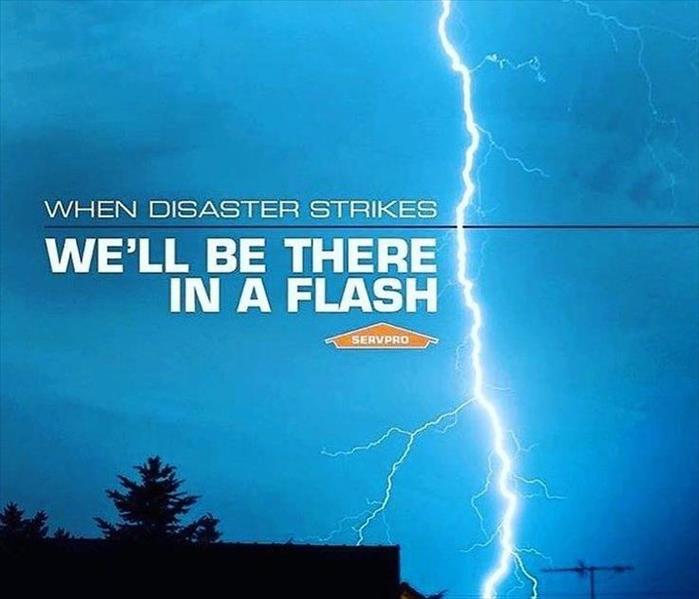When Lightning Strikes
6/13/2018 (Permalink)
 If your home is affected by a lightning storm, please call the professionals at SERVPRO of Desoto, Tate, & Tunica Counties at 662-349-6500
If your home is affected by a lightning storm, please call the professionals at SERVPRO of Desoto, Tate, & Tunica Counties at 662-349-6500
Each year thousands of homes and other properties are destroyed or damaged by lightning strikes.
The first step to protecting your home is contacting a professional who is qualified to design and install a certified lightning protection system. It will be designed to control or force the discharge onto a specified path, thereby eliminating the chance of fire or explosion within non-conductive parts of the house such as those made of wood, brick, tile, etc. A lightning protection system is not intended to prevent a strike. Its purpose is to provide a safe path on which the current can be safely directed to the ground.
A typical lightning protection system
A complete system is made up of the following components:
- Air terminals:Also referred to as lightning rods, these inconspicuous copper or aluminum rods are vertically mounted on the roof at regular intervals. The air terminals serve as strike receptors, designed to intercept the lightning strike.
- Main conductors:Constructed of aluminum or copper, these braided cables connect the air terminals to the other system components and the grounds.
- Grounds:A minimum of two ground rods, driven at least 10 feet deep in the earth are required for all structures. The ground terminations direct the dangerous current into the ground, to eliminate the chance of injury or damage to the structure.
- Bonds:Bonding joins metallic bodies (roof components) and grounded building systems to the main conductor to ensure conductivity and prevent side flashing (lightning jumping between two objects).
- Surge arresters and suppressors:A surge is an increase in electrical current due to a lightning strike on or near a power line or utility service. Surge suppression is installed at the electrical panel(s) to prevent the entrance of over-voltages which can cause a fire. Arresters installed at electrical panels help protect heavy appliances and prevent fires at service panel entrances. Additional devices may be needed to protect other in-house electronics. Surge protection devices are typically installed in conjunction with a lightning protection system.
Tree protection: The Lightning Protection Institute recommends that any tree taller than a home or within 10 feet of the structure be equipped with a lightning protection system. Trees do not offer protection and many homeowners choose to have trees protected for their own value. An unprotected tree in close proximity to a structure can also create a side-flash hazard to the nearby home.

 24/7 Emergency Service
24/7 Emergency Service